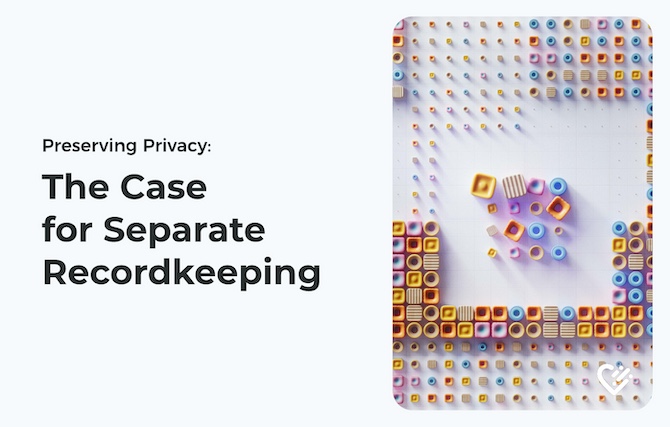In today’s digital age, managing health records has undergone a huge transformation. Moving from old-fashioned paper-based systems to electronic ones has made things much smoother, improving how we access vital information.
But it’s important to recognize that not all record-keeping systems are the same or interchangeable.
Understanding the difference
Electronic Medical Record (EMR) systems are a crucial tool used to digitally manage and store patient medical data. But, contrary to popular belief, EMRs are not designed to track and store worker-focused information and regulatory compliance. Meaning: they cannot identify worker risks or enhance worker protection.
That’s where an employee health system comes in.
While it certainly would be easier to assume that an EMR could be used interchangeably for documenting protected health information (PHI)under the Health Insurance Portability and Accountability Act (HIPPA) as well as employee health information, this actually puts your organization at risk, potentially leading to breaches of confidentiality, violations of federal disability laws, and inadequate worker healthcare.
But why?
The risks of mixing data
Mixing PHI with employee health data can spell trouble in several ways.
For starters, it puts patient privacy and confidentiality at risk. Plus, blending these types of data can create confusion and errors in diagnosis and treatment, not to mention the potential legal headaches related to regulatory compliance.
Simply put, when PHI gets tangled up with employee health data, there’s an increased risk of improperly disclosing sensitive information unnecessarily, and to unauthorized individuals.
For example, details about an employee’s complete medical history – unrelated to a workplace injury – could accidentally land in the laps of those who really shouldn’t have access, potentially resulting in privacy breaches, violation of Federal law, or even discrimination issues.
Boosting productivity and safety
Employee health record systems can be a game-changer when it comes to boosting productivity and improving workplace safety. Just imagine having all your employee health records and workflows in one easy-to-access digital platform.
Unlike EMRs, these employee health systems are specifically designed with streamlined workflows tailored to employee health needs. So, instead of dealing with scattered systems or stacks of paper, everything is right there at your fingertips. This not only saves time but also reduces the chances of errors that often happen with manual record-keeping.
Employee health systems can handle things like scheduling and tracking health screenings, vaccinations, and medical exams. Meaning: your staff spends less time on administrative tasks and more time on the things that matter.
And when it comes to workplace safety, these systems truly shine.
If an employee needs accommodations due to a medical condition, supervisors and managers can quickly access this information to ensure a safe work environment. This proactive approach can help prevent accidents and injuries at work.
Let’s just say regulatory compliance just got a whole lot easier.
The regulatory framework
Two key regulatory frameworks govern medical records: the Health Insurance Portability and Accountability Act (HIPAA) and Occupational Safety and Health Administration (OSHA) regulations.
- HIPAA Compliance
HIPAA, enacted in 1996, sets the standards for the protection of individually identifiable health information. It applies to healthcare providers, health plans, and healthcare clearinghouses, ensuring the confidentiality and security of patient information.HIPAA’s Privacy Rule establishes national standards for protecting PHI, limiting its use and disclosure without patient authorization.
- OSHA Compliance
OSHA, on the other hand, focuses on ensuring safe and healthy working conditions for employees.OSHA’s regulations require employers to maintain records of work-related injuries and illnesses. While OSHA does not specifically regulate the content of medical records, it does require employers to maintain records related to occupational injuries and illnesses separately from personnel records.Under OSHA, employers must provide a safe working environment, including implementing measures to prevent workplace injuries and illnesses.
The importance
Keeping records separate is crucial for compliance with both HIPAA and OSHA.
Mixing PHI with employee health data can lead to privacy breaches, legal issues, and regulatory violations. By maintaining separate records, employers can ensure that sensitive health information is protected and that they are in compliance with both HIPAA and OSHA regulations.
The wrap up
By understanding the distinction between EMRs and employee health systems, organizations can avoid the pitfalls of merging PHI with employee health data.
It’s not just about staying efficient; it’s about safeguarding the security and privacy of employee health information.
Compliance with regulatory frameworks like HIPAA and OSHA is not just a box to check; rather, it’s a fundamental step in ensuring that employee health information is handled with the utmost care and responsibility. You know, the way it should be.
To see how Propelus can help, connect with us.
Disclaimer: This blog is intended for educational and informational purposes only. Readers should consult with legal professionals regarding specific legal questions or concerns related to medical recordkeeping and regulatory compliance.
